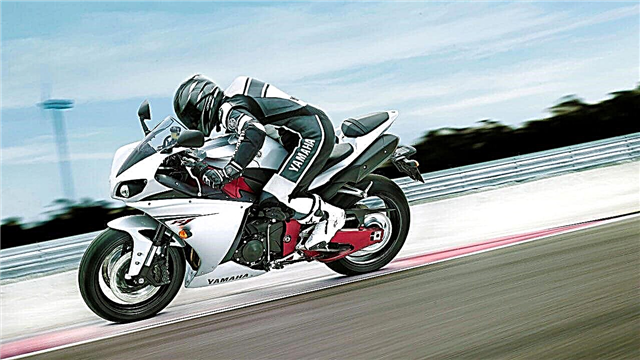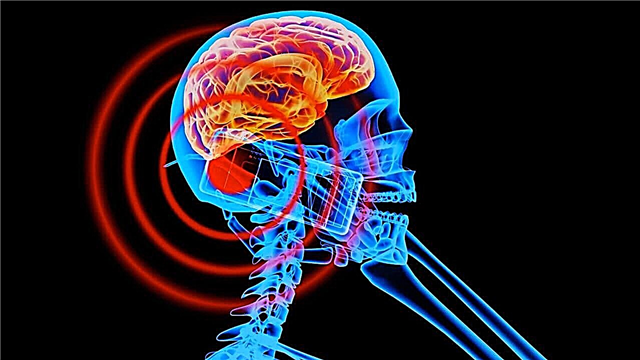For many years after the invention of the internal combustion engine, mankind practiced the destruction of “iron horses”. Of course, the best results (along with the Darwin Prize) are given by drunken riding, but this is for those who appreciate spectacular endings. For the more moderate, not prone to demonstrativeness, we offer the top 5 ways that are guaranteed to be able to render any car unusable. Unfortunately, these methods are very popular among motorists.
5. Habits leading to tire wear
 In fifth place in the ranking of the most common mistakes of motorists, leading to wear and tear on the car is an integral, and quite "capricious" part of any car. Tire pressure is often either too low or too high. Both this and that can significantly degrade the traction and braking characteristics of the car, as well as increase fuel consumption.
In fifth place in the ranking of the most common mistakes of motorists, leading to wear and tear on the car is an integral, and quite "capricious" part of any car. Tire pressure is often either too low or too high. Both this and that can significantly degrade the traction and braking characteristics of the car, as well as increase fuel consumption.
And early or, conversely, late seasonal change of rubber leads to a loss of traction of the tire with the road surface, accelerated tire wear and deterioration of acceleration and braking. To prevent this from happening, you need to choose the best summer tires of 2018 in a timely manner.
In addition, drivers often ignore the rule of changing front and rear tires at least once a year. On a front-wheel drive car, the front tires wear out faster, on the rear-wheel drive, respectively, the rear tires. A worn-out rubber does a poor job - for example, it does not drain water well in the rain, which can lead to skidding, aquaplaning, and possibly an accident.
4. Abrupt acceleration and braking
 Many boys in childhood dreamed of becoming racers. Having become adults and having bought a car, some of the boys who have matured in body but not in the mind are trying to make the dream a reality. If the dream were limited only to body coloring with flames ... but no. One of the most bad habits of motorists, leading to rapid deterioration of the car - to roar with a start, as soon as the red traffic light changes to yellow, or try to effectively pass the turn with a squeal of tires and a brake track. However, they do not pay attention to increased fuel consumption or accelerated wear of the brake mechanism.
Many boys in childhood dreamed of becoming racers. Having become adults and having bought a car, some of the boys who have matured in body but not in the mind are trying to make the dream a reality. If the dream were limited only to body coloring with flames ... but no. One of the most bad habits of motorists, leading to rapid deterioration of the car - to roar with a start, as soon as the red traffic light changes to yellow, or try to effectively pass the turn with a squeal of tires and a brake track. However, they do not pay attention to increased fuel consumption or accelerated wear of the brake mechanism.
However, even respectable car owners have to come to terms with the fact that the urban environment does not contribute to the long life of their “iron friend”. Sudden acceleration and braking are forced into traffic jams, when after a long movement at a snail's speed it is suddenly required to sharply pick up speed and then brake just as quickly. But this way of driving gives an additional load on the car's systems, especially adversely affecting the clutch.
3. Driving style and transmission
 There can be many errors here, and here are the main ones:
There can be many errors here, and here are the main ones:
- the unwillingness of owners of manual transmission to squeeze the clutch when shifting gears (increased load and, consequently, gearbox wear);
- holding the clutch pedal depressed for a long time (leads to damage to the release bearing);
- the inclusion of reverse gear without a complete stop (causes wear on the teeth of the gears of the reverse gear);
- wrong gear selection.
Owners of cars with automatic transmission can kill the gearbox by prolonged towing, sharp acceleration and attempts to drift, as on a TV screen.
2. Dashboard alerts
 Ignoring dashboard icons can seriously impair the condition of the car. After all, they burn there for a reason - a lit light warns that something is wrong with the car. For example, the engine temperature is too low or too high, the pressure in the lubrication system is too low or oil needs to be added / replaced; there is a malfunction in the electrician or the brake fluid level is too low.
Ignoring dashboard icons can seriously impair the condition of the car. After all, they burn there for a reason - a lit light warns that something is wrong with the car. For example, the engine temperature is too low or too high, the pressure in the lubrication system is too low or oil needs to be added / replaced; there is a malfunction in the electrician or the brake fluid level is too low.
Ignoring warnings will not fix the problems, on the contrary - they tend to accumulate, which will lead to either expensive car repairs or even an accident.
1. Unscheduled maintenance
 It seems that everyone has long known that warning is easier than repairing. Or not everyone? One of the main causes of vehicle breakdowns is the driver's failure to comply with the maintenance schedule. But it is precisely it that is able to prevent costly car breakdowns. For example, if you do not change the air filter for a long time, the mass air flow sensor may fail and you have to change it already - and this is much more expensive.
It seems that everyone has long known that warning is easier than repairing. Or not everyone? One of the main causes of vehicle breakdowns is the driver's failure to comply with the maintenance schedule. But it is precisely it that is able to prevent costly car breakdowns. For example, if you do not change the air filter for a long time, the mass air flow sensor may fail and you have to change it already - and this is much more expensive.
We must not neglect not only daily maintenance (checking engine oil levels, tire pressure, mirrors, leaks, etc.), but also “short” and “long” maintenance depending on the mileage of the machine (checking transmission elements, oil filter, system engine cooling, etc.), as well as seasonal maintenance, when the car is prepared for the changing seasons.
And finally ...
Do not warm up the engine at idle
 Numerous tests have long been proven that prolonged warming up of an engine with electronic fuel injection at idle leads to increased wear on the piston group. In moderate frosts, it is enough to let the engine run for 40-60 seconds, with severe frosts - 2-3 minutes. After this, you should smoothly start moving at medium engine speeds without rebasing.
Numerous tests have long been proven that prolonged warming up of an engine with electronic fuel injection at idle leads to increased wear on the piston group. In moderate frosts, it is enough to let the engine run for 40-60 seconds, with severe frosts - 2-3 minutes. After this, you should smoothly start moving at medium engine speeds without rebasing.
The habit of warming the engine to operating temperature is a relic of the past, which is associated with the peculiarity of the operation of carburetor engines. All modern cars lack this feature.












